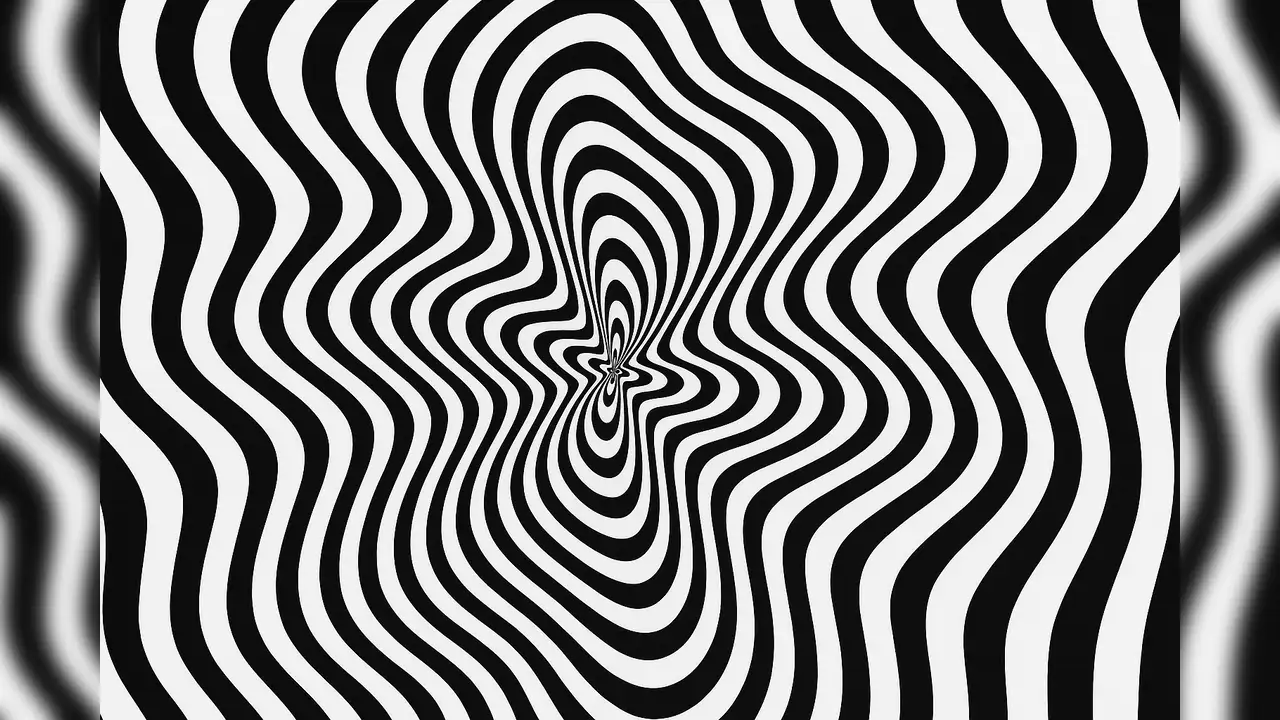By Supriya Ramesh
Stare at this wavy black-and-white spiral for long enough, and you might feel your eyes twitch, your head tilt slightly, or your mind wonder if the room is subtly spinning. No, it is not magic; it is your brain, quite literally, getting tricked. Optical illusions like this offer fascinating insights into how our brain processes reality and why that matters for our mental and neurological health. This illusion, in particular, plays with spatial distortion, pattern interference, and visual confusion to create a “moving” effect where none exists. But what is really happening? The answer lies deep inside your brain’s visual processing centre. Our brains are trained to make sense of visual input fast—so fast, in fact, that they sometimes take shortcuts. When an image like this contains rhythmic, high-contrast patterns, your brain interprets it as depth, motion, or warping—none of which are actually there. These visual “errors” tell us that our perception of the world is not always reliable. That is a crucial realisation not just for artists or neuroscientists but for anyone interested in mental health. First, illusions like this show us how adaptable and fallible our brains are. They teach us that perception is not purely objective. This is especially relevant when thinking about mental health conditions like anxiety, depression, or even trauma. Just as the brain misinterprets lines and shapes here, it can also misinterpret emotional stimuli—seeing danger where there is none or perceiving hopelessness in situations that are objectively manageable. Second, illusions demonstrate neuroplasticity: the brain’s ability to change and adapt based on stimuli. Studies have shown that regularly engaging with optical illusions can stimulate the visual cortex and improve cognitive flexibility. Some cognitive therapy exercises even use perceptual puzzles and illusions to train attention and build new neural pathways in recovering stroke or brain injury patients. Then there’s the stress angle. Ever stared at something like this and found yourself oddly… relaxed? That is because illusions, despite their confusion, invite curiosity. They break monotony and engage the brain in active problem-solving, pulling your attention away from anxious thoughts. In this way, illusions function almost like mindfulness tools. They ground you in the present, asking your brain to solve a riddle it never quite can. It’s weirdly comforting. But beware—too much of a good thing can lead to visual fatigue or eye strain, especially in people prone to migraines or photosensitivity. Health professionals advise limiting your exposure to such illusions if you start feeling dizzy, nauseous, or disoriented.
